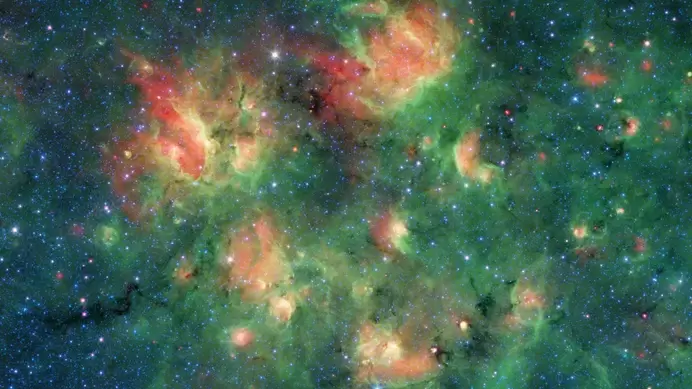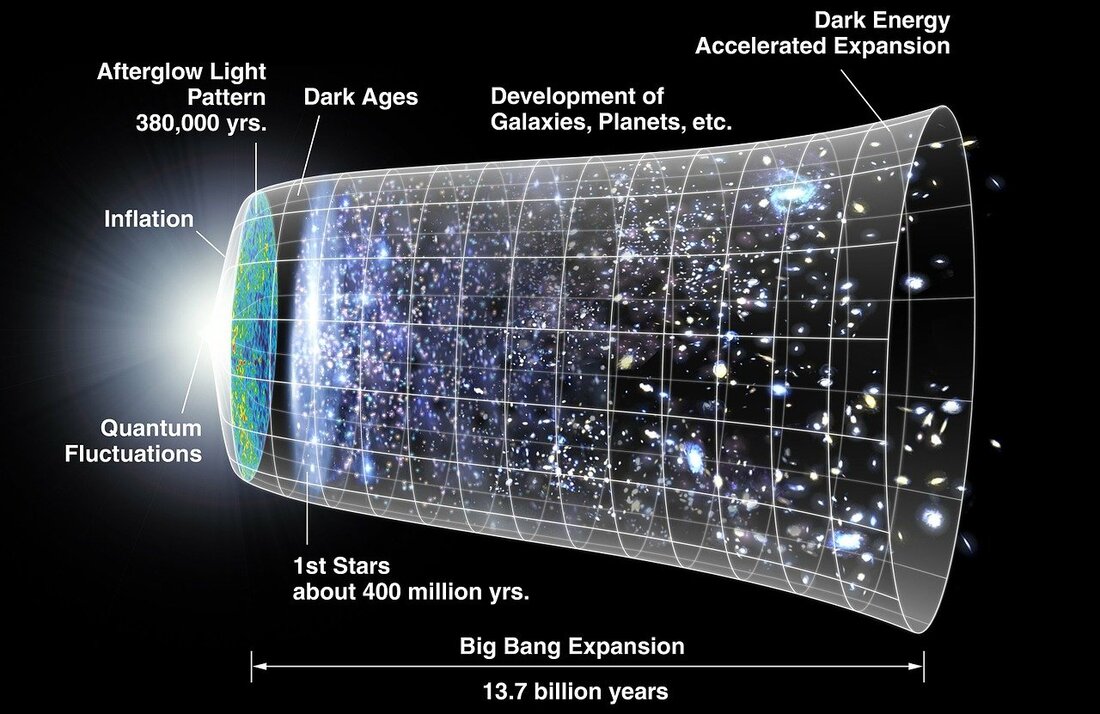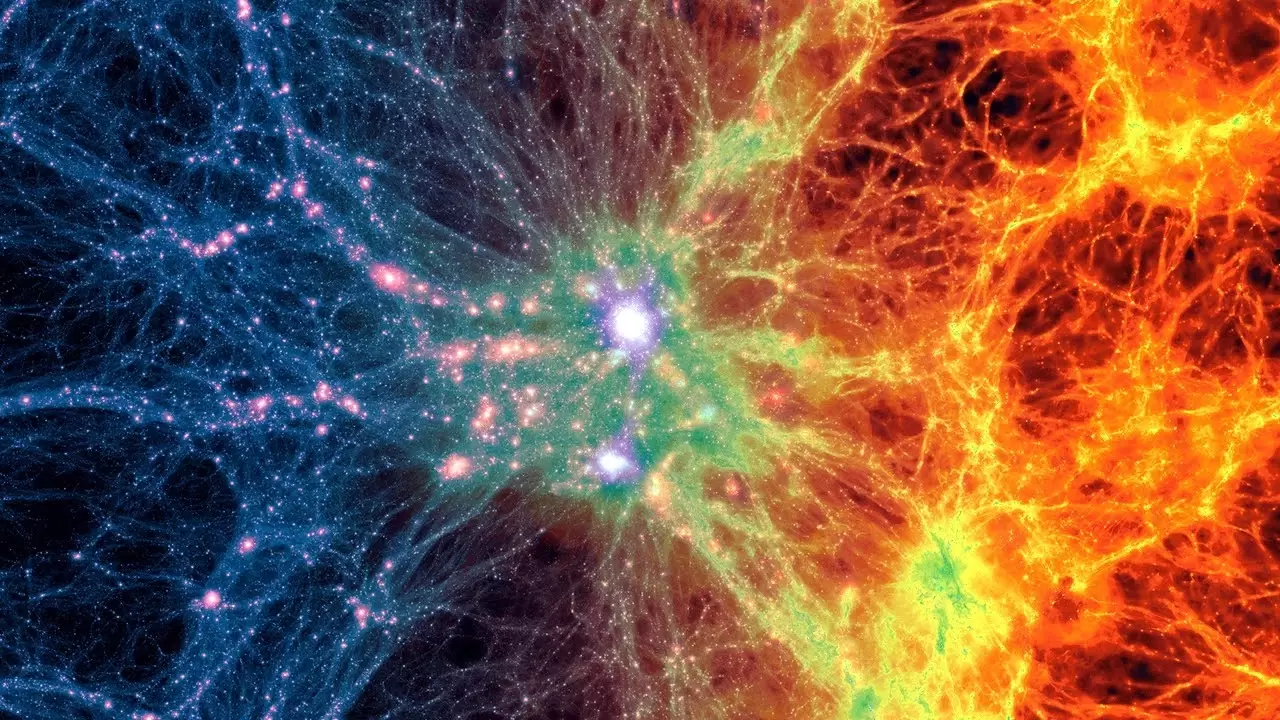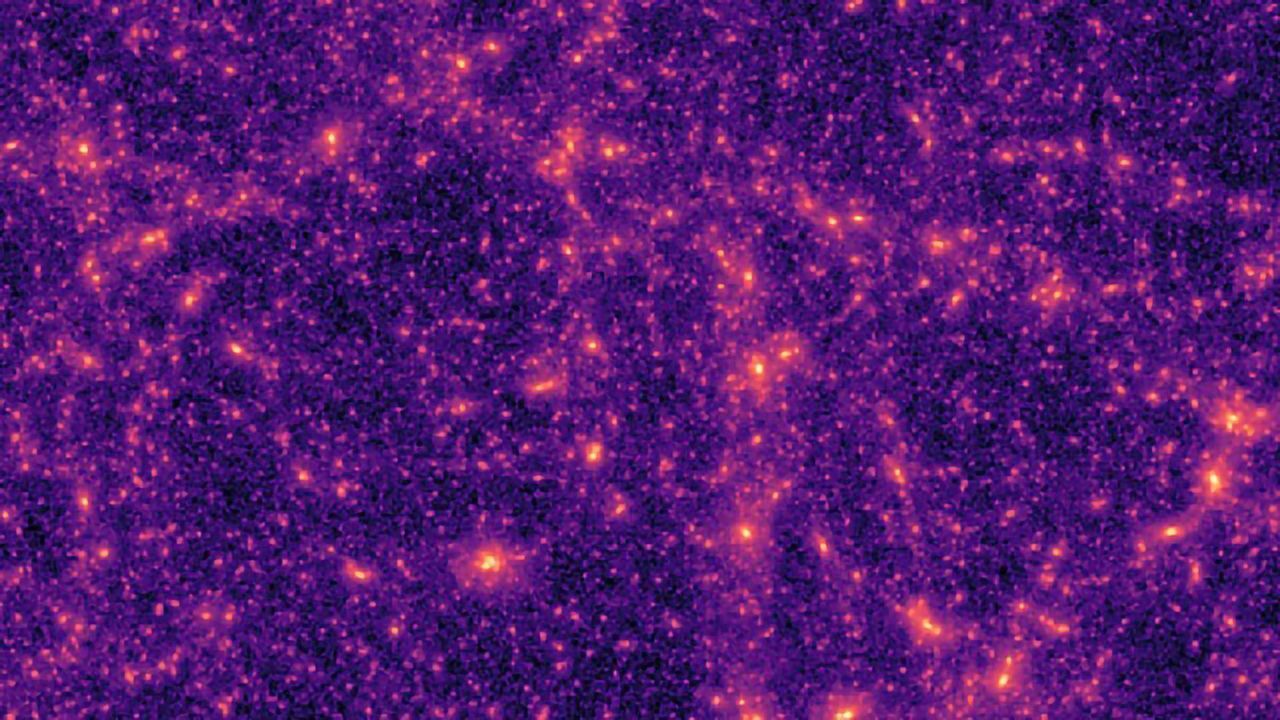|
Note from the InnovaSpace team: When we saw the beauty of the exoplanet infographics sent to us by artist Martin Vargic, we simply couldn't resist asking him to present them below - the detail is amazing - congratulations Martin! Author: Martin VargicAuthor, artist and designer from Slovakia  Copyright ©: Martin Vargic Copyright ©: Martin Vargic I created my first visualization of exoplanets in 2015, which included a size comparison of over 500 individual exoplanets. After finishing a book on the universe, astronomy and space exploration, the "Curious Cosmic Compendium", with infographic chapters about the "Scale of the Universe", "Timeline of the Universe" and an entire section focused on exoplanets, I decided to further expand upon this and create the two exoplanet infographics you see below. Both graphics plot the planets from left to right according to the amount of heat they receive from their star and their projected equilibrium temperature, from cryogenically cold planets on the far left to molten scorching-hot worlds on the far right. A small strip of green leaves shows the optimistic habitable zone, where some liquid water might exist on the surface of terrestrial planets or potential exomoons. All planets in the solar system are included to scale for comparison. Coloration of planetary atmospheres is based on the different chemical composition of cloud layers at different temperatures (sulfur compounds, chlorides, alkali metals, silicates), the Sudarsky Scale, as well as existing exoplanet art. "Icy and Rocky Worlds" focuses on earth and super-earth planets that could have a terrestrial composition, with almost 900 planets shown, while the "Exoplanet Zoo" zooms out more to show ice and gas giants, including some of the largest known exoplanets, with many other record-holding planets included (highest/lowest albedo, most distant, least dense, hottest, shortest orbit, closest, etc.). In total, around 1600 individual exoplanets are featured on one or the other graphic, but that's still less than 1/3 of all exoplanets confirmed to exist! If you would like to see these infographics (and others) in a higher resolution, please feel free to visit my website by clicking the following links:
EXOPLANET ZOO & ICY and ROCKY WORLDS Posters are also available at Halcyonmaps: Authors: Dr Venkatesh T Lamani, Swapnil K SinghBMS College of Engineering, Bull Temple Rd, Basavanagudi, Bengaluru, Karnataka, India 560019 Bubbles are a common occurrence in liquids, ranging from the simple rising ones to the turbulent ones that playfully form. However, behind their seemingly innocent façade lies a lesser-known and more complex side—cavitation bubbles. These unassuming bubbles possess the capacity to wreak havoc, generating destructive shock waves, emitting bursts of light, and even exhibiting unique chemical properties. In this article, we will delve into the intricate mechanics of cavitation bubbles, shedding light on their rapid collapse phase and the fascinating behaviours that accompany it. Cavitation bubbles undergo a sequence of stages, each contributing to their overall behaviour. It all begins with the inception of minuscule gas or vapor pockets known as nuclei within the liquid. These nuclei can emerge from various sources such as dissolved air, impurities, or surface irregularities. As the liquid traverses areas of lower pressure, these nuclei gradually expand into larger bubbles due to vaporisation—a process akin to boiling, yet without the actual boiling point being reached. The movement of cavitation bubbles is governed by the interplay between forces within the fluid flow and the intrinsic characteristics of the bubbles themselves. Forces such as drag, buoyancy, pressure gradients, and interactions with solid surfaces dictate their trajectories. Some bubbles ascend due to buoyancy, while others become entrapped in turbulent flows, swirling unpredictably. Along their trajectory, pressure gradients act as guiding forces, steering the bubbles in specific directions. Yet, the most intriguing facet of cavitation bubbles lies in their eventual collapse. As these bubbles transition from low-pressure regions to areas of higher pressure, they face escalating external pressure. This rapid compression leads to their dramatic collapse, referred to as the bubble collapse phase. During this phase, the confined space witnesses the generation of extreme pressures and temperatures, resulting in the formation of shock waves, microjets, and even flashes of light. This release of energy significantly contributes to the inherently destructive nature of cavitation, capable of causing damage to nearby surfaces. The collapse transpires in a fleeting instant, lasting only microseconds. The energy unleashed results in temperatures surpassing the sun's surface heat and pressures that rival the deepest ocean trenches. Shock waves and microjets formed in this dramatic event have the power to erode metals, damage propellers, and influence chemical reactions within the surrounding liquid. Researchers are particularly enthused by the potential applications of this released energy, spanning from catalysing intricate chemical reactions to advancing medical treatments.
Despite extensive research, comprehending the intricate dynamics of cavitation bubbles remains a formidable challenge. The intricate dance of fluid dynamics, coupled with the unpredictable nature of turbulence, renders achieving comprehensive understanding an ongoing pursuit. Researchers employ numerical simulations and experiments to gain insights, yet many aspects of this phenomenon are still awaiting exploration. Unravelling the mechanisms underlying bubble collapse and its aftermath stands as a continuing endeavour, driven by the desire to harness its energy while mitigating its potential harm. Author: Luis E. Luque Álvarez Violin Teacher, Kittenberger Kálmán Primary & Art School of Nagymaros, Hungary. Member of the European Low Gravity Research Association (ELGRA), and member of the Education Advisory Board for NASA’s Eclipse Soundscapes Project (ES: CSP) Are the right polyphonies of orbits contributing to the rise of life in the universe? Sonification is a multidisciplinary method that complements data visualisation through adding an auditory component that facilitates the interpretation of visual features. The origin of sonification dates to 1908, when Hans Geiger and Walther Müller experimented with the sound coming from tubes of ionizing gas and radiation. Edmund Edward Fournier d’Albe later invented the Optophone, a device that scans text and transforms it into time-varying chords of tones, enabling people who are blind to identify and understand letters through sonification. This method has become popular in astronomy, though its real roots can be traced back further in history if you consider the works of Pythagoras, who proposed that planets all give off a unique hum based on their orbital revolution, while the “Musica Universalis” developed by Johannes Keppler highlighted the orbital path of each celestial body as individual voices in a planetary polyphony. Andreas Werckmeister subsequently developed his temperaments and tuning systems based on Kepler’s theories, which later influenced the sequences and structures composed by Johann Sebastian Bach. This connection from Kepler to Bach continues to be investigated to the present day by musicologists. In fact, in can be argued that without the musical developments of Pythagoras, Kepler, Werckmeister and Bach taken from astronomical principles, the musical systems and knowledge of our postmodern times could be very differently structured, at least considering western music. Astronomical studies seek the combination of different celestial harmonies or polyphonies from the orbits that could have a direct relation with the essential conditions for life in evolving protoplanetary systems, different stars, planets transformation or even the connection to black holes or dark matter (see below YouTube videos).
Cosmic Conundrum: Unexplained Discovery at Interstellar Meteor Crash Site Sparks Scientific Intrigue18/8/2023
Author: Swapnil K Singh FRSA, IndiaUndergraduate: Astronomy Research & Mechanical Engineering - Astrophysicist of the future! In an extraordinary scientific expedition, researchers embarked on a quest to investigate remnants of the first recognised interstellar meteor, IM1. As they explored the crash site, an astonishing revelation emerged, challenging our understanding of cosmic phenomena and hinting at the possibility of extraterrestrial technology. During their initial examination of the crash site, the team encountered a considerable amount of volcanic dust particles on their magnetic sled. These tiny particles, measuring less than a tenth of a millimetre, were diligently removed from the sled's magnets using a painter's brush. However, it was the presence of a peculiar wire, labelled IS1–2, that truly astonished the researchers. Despite being dragged through the ocean water by the ship Silver Star, the wire remained firmly attached to one of the magnets. The scientists proposed that the volcanic magnetic particles acted as a magnet, effectively holding the wire in place against the force of the ocean current. Driven by curiosity, Ryan Weed and Jeff Wynn conducted an in-depth analysis of the wire's composition. Using an X-ray fluorescence analyser manufactured by Bruker, they compared its composition to known human-made alloys. The results revealed significant peaks in manganese (Mn) and platinum (Pt) on the periodic table. Further investigation unveiled that the wire was composed of a manganese-platinum alloy (MnPt). However, the relative abundance of manganese and platinum in IS1–2 diverged significantly from the composition of MnPt alloys typically used in laboratory non-corroding electrodes. This perplexing deviation suggested the possibility of an origin beyond our world.
Author: Swapnil SinghUndergraduate: Astronomy Research & Mechanical Engineering - Astrophysicist of the future! In the beginning, nearly fourteen billion years ago, all the space and all the matter and all the energy of the known universe was contained in a volume which is infinitely small. At that time, conditions were so hot, the basic forces of nature that collectively describe the universe were unified. This extremely dense point exploded with unimaginable force, creating matter and propelling it outward to make the billions of galaxies of our vast universe. Astrophysicists dubbed this titanic explosion as the Big Bang. In Big Bang cosmology, the Planck epoch or Planck era is the earliest stage immediately after the Big Bang, before the time passed was equal to the Planck time is approximately 10−43 seconds (one ten-million-trillion-trillion-trillionths of a second). As the universe aged through seconds it continued to expand, diluting all concentrations of energy, and what remained of the unified forces split into the “electroweak” and the “strong nuclear” forces. Later still, the electroweak force split into the electromagnetic and the “weak nuclear” forces, laying bare the four distinct forces we have come to know: with the weak force controlling radioactive decay, the strong force binding the atomic nucleus, the electromagnetic force binding molecules, and gravity binding bulk matter. One of the force splits in the early universe was accompanied with an asymmetry in which particles of matter outnumbered particles of antimatter, thanks to this asymmetry. Without the imbalance between matter and antimatter, all mass in the universe would have self-annihilated, leaving a cosmos made of photons and nothing else. All of this was happening with the interplay of matter, which includes subatomic particles and energy in the form of photons. This era of the universe is called the quark–lepton era. The universe was hot enough for these photons to spontaneously convert their energy into matter-antimatter particle pairs, which immediately thereafter annihilate, returning their energy back to photons. At this particular time the universe was a seething soup of quarks, leptons, and their antimatter siblings, along with bosons, the particles that enable their interactions. None of these particle families is thought to be divisible into anything smaller or more basic. As the cosmos continued to expand and cool, growing larger than the size of our solar system, the temperature dropped rapidly below a trillion degrees Kelvin. This universe was no longer hot enough or dense enough to cook quarks, and so they all collided with each other, creating a permanent new family of heavy particles called hadrons. As the universe continued to cool, the amount of energy available for the spontaneous creation of basic particles dropped. By now, one second of time has passed. The universe has grown to a few light-years across, about the distance from the Sun to its closest neighbouring stars. At a billion degrees, it is still hot and still able to cook electrons and positron counterparts. As the cosmos continues to cool protons fuse with protons as well as with neutrons, forming atomic nuclei and creating a universe in which ninety percent of these nuclei are hydrogen and ten percent are helium. In this particle soup the temperature remains hot enough for electrons to roam free but this freedom comes to an abrupt end when the temperature of the universe falls further and all the free electrons combine with nuclei. The marriage leaves behind a holy bath of visible light, forever imprinting the sky with a record of where all the matter was in that moment, and completing the formation of particles and atoms in the primordial universe. For the first billion years, the universe continued to expand and cool as matter gravitated into the massive concentrations, we call galaxies. Nearly a hundred billion of them formed, each containing hundreds of billions of stars that undergo thermonuclear fusion in their cores. Those stars with more than about ten times the mass of the Sun achieve sufficient pressure and temperature in their cores to manufacture dozens of elements heavier than hydrogen, including those that compose planets and whatever life may thrive upon them. Thus, the evolution continues... This blog is promoted and supported by the Space Crew Working Group
|
Welcometo the InnovaSpace Knowledge Station Categories
All
|
UK Office: 88 Tideslea Path, London, SE280LZ
Privacy Policy I Terms & Conditions
© 2024 InnovaSpace, All Rights Reserved











 RSS Feed
RSS Feed